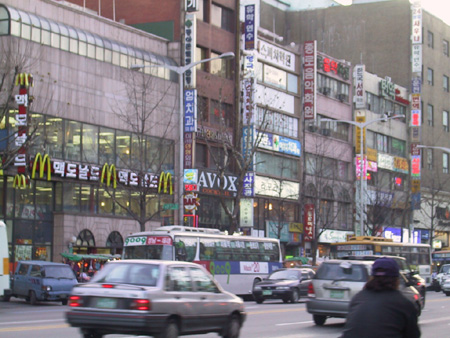Jongno, Everything's Waiting For You, Downtown

Surrounded with movie theaters and education centers, Jongno is famous for young people's dating place. There is Gyobo Book Center, which holds more than 2 million books (340,000 publications in English, 75,000 Japanese publications), and Tapgol Park and Jongmyo Park serve as mother nature among the skyscrapers.
Jongmyo Park
Jongmyo Park is the place where Joseon King has done various ceremonies, and Jongmyo Jeongjeon and Yeongnyeongjeon are must-see. Also, this park is recognized as one of the greatest heritages in the world by UNESCO.
Admission fee Adult 700won, Youth 300won
Opening hours 09:00~18:00, close on Tuesdays
How to get there 5 minute walk away from exit no.4 of Jongno 3-ga station line number 1, exit no.1 of line number 3, and exit no.1 of line number 5.
Gyeongbok-gung
In Jongno, there are many palaces including Gyeongbok-gung (Sejongno 1-ga, Jongno-gu, Seoul). Gyeongbok-gung (historical remains #117) is one of the five great palaces of Joseon period, and as such it exerts beautiful architecture. Great pavilions, such as Gyeonghoeru, Hyangweonjeong and Geunjeongjeon, Gyeongcheonsaji 10-story tower are built in this palace.
In Gyeongbok-gung, there have been a number of historical incidents. In 1910, Japanese destroyed 4,000 rooms of Gyeongbok-gung when Korea was colonized by Japan. Fortunately, Gyeongbok-gung could be rebuilt after Korea regained freedom. You can also visit The National Folk Museum (opened in 1975), where Korean traditional culture is being exhibited.
|

